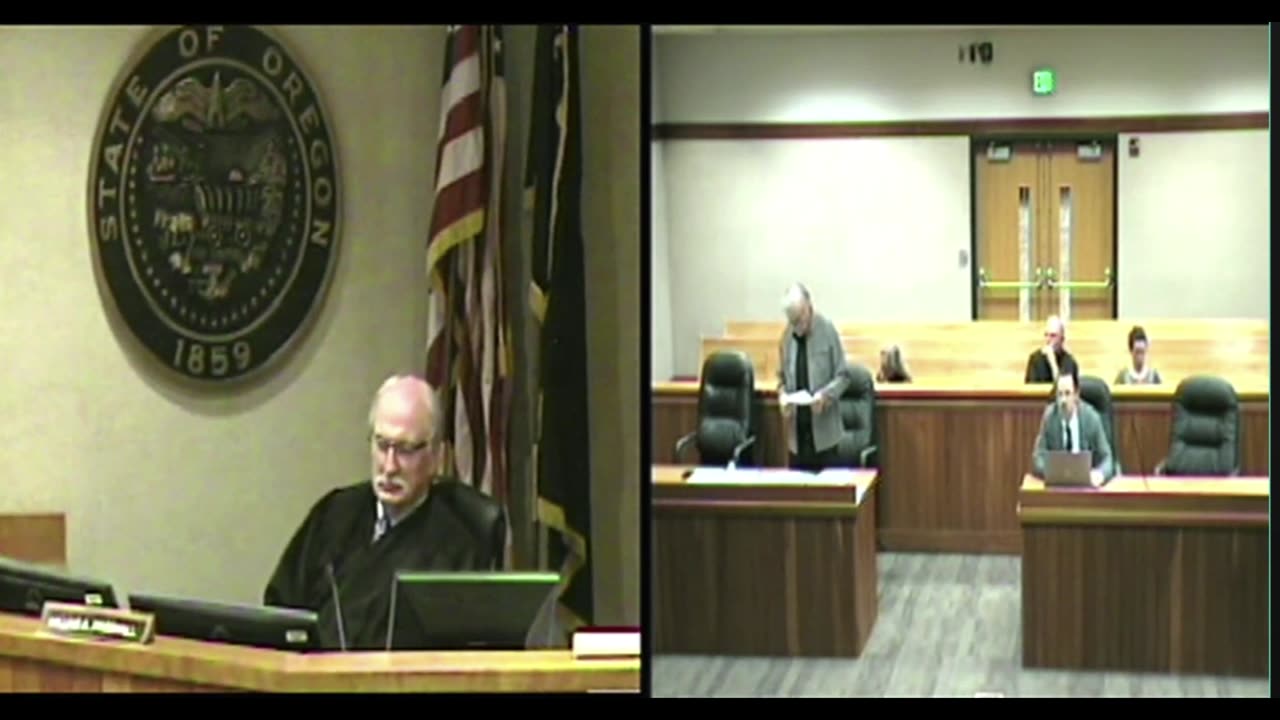Premium Only Content

Revoke Release Agreement & Easement Rights
Continuance of a court hearing regarding a motion to revoke Ronald Ray Thompson's release agreement, focusing on easement rights and violations of court orders.
Hearing Context and Legal Proceedings
• The court session addresses the case of State v. Ronald Ray Thompson, specifically a motion to revoke his release agreement.
• Legal memoranda were submitted by both parties, which the judge reviewed prior to the hearing.
• A map related to the easement was presented by Mr. Thompson but was not formally admitted into evidence due to procedural issues.
• The judge emphasized adherence to court rules, stating that all evidence must be properly offered and reviewed by both parties.
Easement Dispute
• Mr. Thompson claims the map illustrates the easement's boundaries, asserting it was provided by a surveyor.
• The prosecutor objected to the map's admission, citing hearsay since the surveyor was not present to testify.
• Mr. Thompson attempted to introduce various deeds related to the easement, which were accepted by the court, while an affidavit of fact he presented was rejected due to its subjective nature.
• The discussion centered on whether the easement is affirmative (allowing specific uses) or negative (restricting use), with Mr. Thompson asserting it is affirmative.
Legal Arguments and Case Law
• The prosecutor argued that Mr. Thompson violated his conditional release by having contact with Robert Kim Reid, the owner of the servient estate, despite a court order prohibiting such contact.
• The prosecutor maintained that Mr. Thompson's claims regarding exclusive rights to the easement were unsupported by Oregon law, which delineates the rights of dominant and servient estates.
• Mr. Thompson countered that the easement was historically exclusive to his family, asserting that the Reeds understood its nature when they purchased the property.
• He referenced various cases to argue that the easement should not be considered shared, emphasizing that the easement's language and historical context support his position.
Court's Consideration and Next Steps
• The judge acknowledged the complexity of the easement issue and indicated that he would take the matter under advisement, reviewing the submitted documents and map.
• The judge noted that the interpretation of the easement would not be solely based on Mr. Thompson's perspective but would consider the legal definitions and historical context.
• The hearing concluded with the judge's commitment to provide a decision before the end of the proceedings.
Conclusion
• The court is tasked with determining the validity of Mr. Thompson's claims regarding the easement and whether his actions constitute a violation of the conditional release agreement.
• The outcome will hinge on the interpretation of the easement documents, relevant case law, and the established rights of both parties involved
-
 LIVE
LIVE
SpartakusLIVE
4 hours agoLIVE from the Creator House in FLORIDA || WZ Solos to Start - PUBG, REDSEC or ARC Later?!
638 watching -
 58:03
58:03
MattMorseTV
5 hours ago $45.84 earned🔴Trump is BRINGING the CHARGES. 🔴
63.3K152 -
 5:31:43
5:31:43
EricJohnPizzaArtist
4 days agoAwesome Sauce PIZZA ART LIVE Ep. #70: Movie Night featuring Dark Helmet!
37.4K8 -
 2:06:00
2:06:00
Joker Effect
3 hours agoMASSIVE UPDATES ON MY CHANNEL... what does 2026 look like? CHATTIN WITH WVAGABOND (The Captain).
22K2 -
 2:24:34
2:24:34
vivafrei
15 hours agoEp. 292: Bondi's Betrayal & Comey Judge Caught Lying! Crooks Acted Alone? Judicia Activism & MORE!
201K162 -
 8:06:14
8:06:14
GritsGG
8 hours ago#1 Most Warzone Wins 4015+!
142K2 -
 5:14:53
5:14:53
Due Dissidence
12 hours agoTrump SMITTEN By Mamdani, MTG RESIGNS, Hurwitz DOUBLES DOWN on CENSORSHIP, RFK Jr "Poetry" EXPOSED
36.4K32 -
 39:40
39:40
Tactical Advisor
9 hours agoUnboxing New Tactical Packs | Vault Room Live Stream 046
75.6K6 -
 3:30:58
3:30:58
elwolfpr
7 hours agoElWolfPRX Enters the Storm: First Winds
20.7K -
 14:59
14:59
MetatronHistory
23 hours agoAncient Bronze Was Not the Way You Think
44.3K16